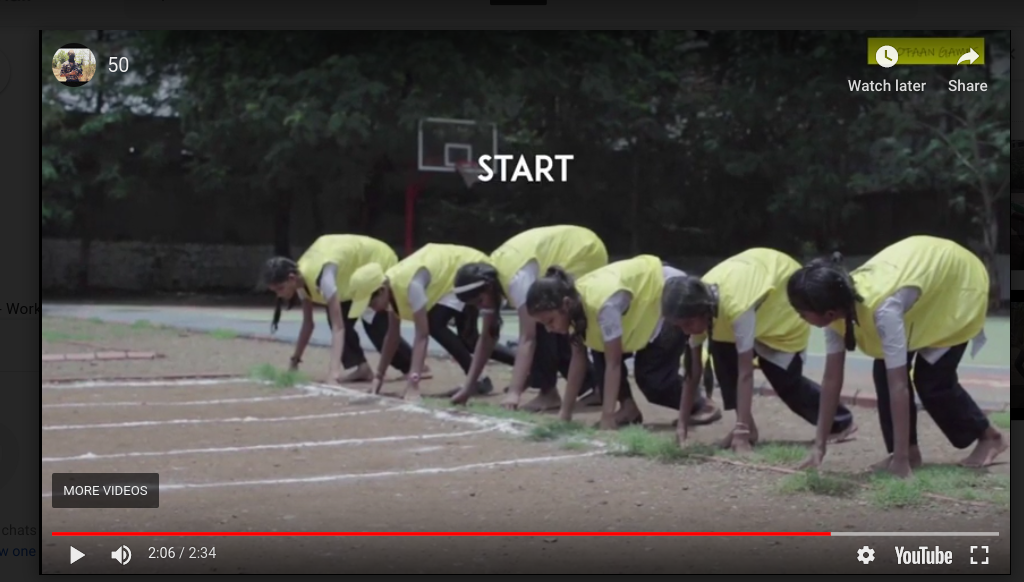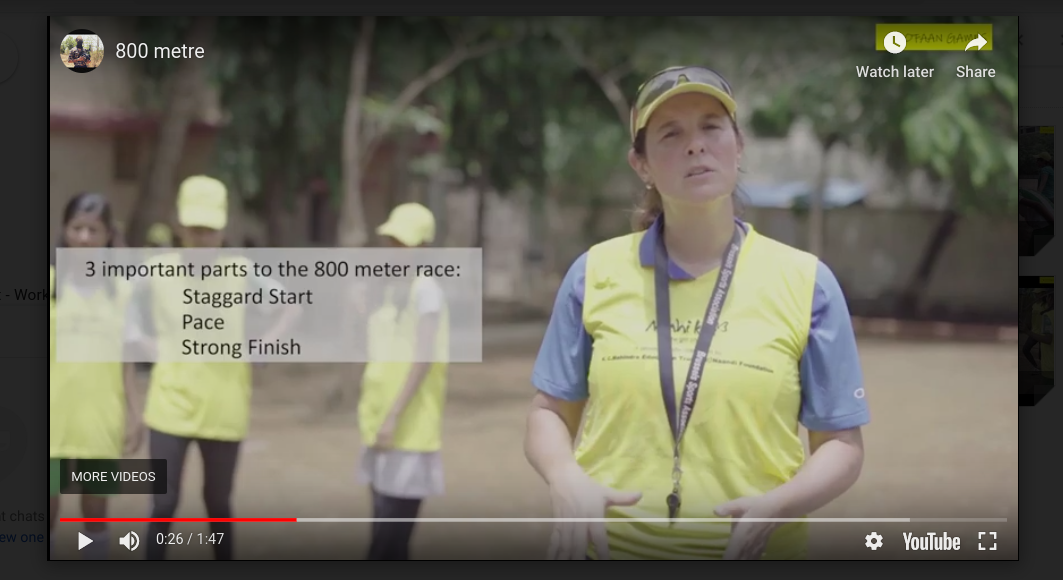Challenges and Obstacles in Sport and Development in India
Challenges and Obstacles in Sport and Development in India
Videos used as a tool to tackle the challenges of communication
Sitting at the office of The Naandi Foundation in Hyderabad, a group of wonderful women gathered around the table to discuss the beginning of one of the biggest grassroots girls sport projects in India; “Nanhi Kali Sports”. One of the early steps in this drive, was to organise a Sports Day for girls aged 10-15. The excitement was building for me as I envisioned dozens of girls beginning their sport for life journey.
My mind was already building very practical lists of how to go about organising this day until Rohini Mukherjee, Naadi’s Head of Girls’ Portfolio turned to me and explained: “We are expecting around 37 000 girls to participate in this sport day.” She continued: “And, we would really like to build a sport for life program for over 150 000 girls.” My mind started to short circuit and I nearly spilled my tea all over my lap!
The strong desire of Nanhi Kali Sports, is to create a sustainable sport for life program that sees local women coaching girls. The hope is that this is perpetuated as the current generation of girls will go on to be the coaches of tomorrow. But, how can we start to reach a population of tens of thousands of girls and help train thousands of community leaders to be the coaches? The obstacles are many, but one strategy that Nanhi Kali has used is the use of videos.
Sport Videos
Sport videos are not new and they are not in short supply. A simple search on “sport” on YouTube will generate thousands of possibilities! But what makes for an effective sport video when reaching out to tens of thousands of underprivileged girls and women all over India?
 50 meter sprint
50 meter sprint
Access
The first is access to the videos. India’s appetite for smartphones is insatiable as the numbers of users continue to climb exponentially into the hundreds of millions. Although many of the girls in the sport program would not own one, the majority of the community leaders do or have family members who do. However, the wifi in India can vary depending on location. So, it is crucial that the videos are light and short to help reach your audience.
Language
The second challenge is the language of the video. The girls and community workers involved in this program speak eight different languages. However, the common language the girls are learning in their education program is English so the decision was made to use English. But, rather than use vocals in English which would be very challenging for the audience to understand, simple and limited text was used. This way the audience can pause the video at certain places to slowly read and interpret the text. The main objective of the video was to demonstrate through the activity rather than explain verbally.
 The 800 metres
The 800 metres
Feelings of Identification
The third crucial element is for your audience to identify with the video. If your audience is girls and women from India who have a burgeoning understanding of sport, you must ensure the following: the setting of the video is India; the girls in the video are the same as your audience; the technical elements of the sport are elementary; the audience is not inundated with overwhelming amounts of information and expectations. The girls have to feel like they can do the sport exercise and the officials must feel that they can understand the basic technical requirements.
The use of videos is part of a complement of resources that have been designed specifically for this project. We have found that by using the right methods, videos are an incredible helpful way to reach a very large population.
The Nanhi Kali team has invested in a series of professional instruction videos to be distributed to over 37 000 girls and 1800 community leaders to help educate them on various areas of multi-sport. If you are interested in these videos or if you are doing something similar somewhere else in the world, we want to hear from you! (lisa@globalnomadsworld.com) #GNW